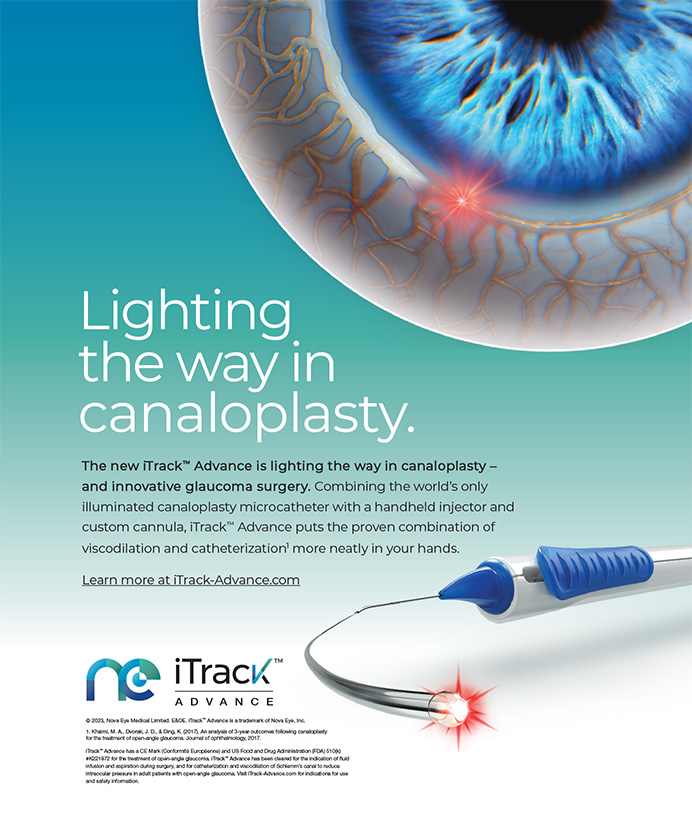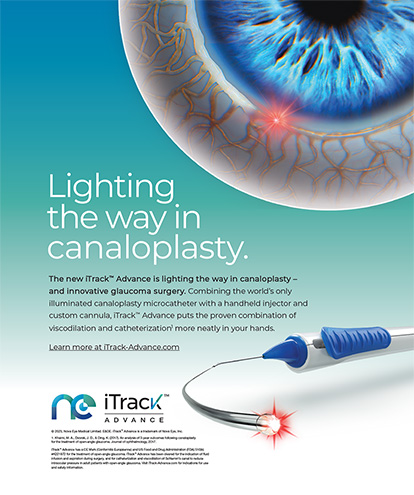
Cataract surgery is traditionally viewed as a reactive measure, whereas refractive lensectomy surgery is regarded as a preemptive strategy. The latter procedure—a proactive approach to lens removal—empowers patients to enjoy improved spectacle independence long before the onset of significant visual impairment due to cataracts. Recent advances in IOL technology have catapulted the field forward, offering patients not just vision correction but also unparalleled optical quality, minimal visual compromise, optimized contrast sensitivity, and fewer chromatic aberrations and dysphotopsias. Advanced technology IOLs therefore enhance patients’ quality of life and their ability to interact with their environment.
Adopting a refractive mindset is essential to weighing the risks and benefits of various presbyopia solutions over a patient’s lifetime. Given the decreasing risks associated with cataract surgery, the improvements patients gain in their visual acuity and quality of vision, and fewer side effects with range-of-vision lenses, refractive lensectomy is emerging as an increasingly attractive, more permanent solution for spectacle independence.
Each advanced technology IOL presents a trade-off among quality of vision, dysphotopsias, and range of vision. Our role is to communicate these advantages and limitations to patients effectively while tailoring our recommendations to their unique ocular health and visual goals. We’ve all encountered patients who, despite experiencing what we deem to be an expected outcome, express disappointment after surgery.
Emerging tools such as the SimVis Gekko (2EyesVision) and Ralv (Dezimal) can help patients better grasp the benefits and limitations of IOL technologies by allowing them to preview the visual outcomes of various presbyopia-correcting lenses. These technologies can aid us in targeting the best compromise for each patient, bridging the communication gap and increasing postoperative patient satisfaction.
In addition to the allure of spectacle independence, refractive lensectomy may also significantly improve safety for elderly individuals. In this population, wearing multifocal glasses nearly doubles the rate of outdoor falls compared to wearing single-vision lenses.1 Refractive lensectomy helps alleviate such risks by facilitating a smoother visual transition and eliminating the abrupt shifts in focus associated with multifocal glasses. The procedure improves spatial awareness and minimizes the risks linked to progressive lenses, such as trouble with descending steps and navigating unfamiliar environments.2 The Visual Intervention Strategy Incorporating Bifocal & Long-distance Eyewear (VISIBLE) randomized controlled trial involving 606 patients with a mean age of 80 years demonstrated an 8% reduction in falls when participants switched from multifocal to single-vision glasses.1
Similarly, monovision approaches—whether with contact lenses or laser vision correction—can negatively affect stereopsis and safe ambulation over uneven surfaces, especially in older patients with balance issues.3 Eliminating the need for multifocal or progressive spectacles and monovision solutions carries considerable safety implications that become increasingly pertinent as patients age.
As advances in lens technology and preoperative diagnostics evolve, so does our ability to meet or exceed patient expectations. Refractive lensectomy with presbyopia-correcting IOLs consistently achieves patient satisfaction rates exceeding 90% and marked improvements in quality of life.4-7
The economic benefits of a single-event investment such as refractive lensectomy are compelling, especially compared to the long-term recurring financial cost of other vision correction methods, including prescription eyewear, contact lenses, and related solutions, and the eventual necessity of cataract surgery. Furthermore, the procedure offers additional value by mitigating the risk of falls—a factor known to generate further health care costs.
Refractive lensectomy is emerging not merely as a surgical intervention but as a critical component in a comprehensive, lifelong presbyopia management strategy. Beyond its immediate benefits, the procedure also carries implications for preventive health care: It reduces the risk of falls, lowers the incidence of corneal infections associated with contact lens use, and eliminates the recurrent costs related to spectacles and contact lenses.
Cathleen M. McCabe, MD
Chief Medical Editor
1. Haran MJ, Cameron ID, Ivers RQ, et al. Effect on falls of providing single lens distance vision glasses to multifocal glasses wearers: VISIBLE randomised controlled trial. BMJ. 2010;340:c2456.
2. Lord SR, Dayhew J, Sc BA, Howland A. Multifocal glasses impair edge‐contrast sensitivity and depth perception and increase the risk of falls in older people. J Am Geriatr Soc. 2002;50(11):1760-1766.
3. Vale A, Scally A, Buckley JG, Elliott DB. The effects of monocular refractive blur on gait parameters when negotiating a raised surface. Ophthalmic Physiol Opt. 2008;28(2):135-142.
4. Venter JA, Pelouskova M, Bull CE, Schallhorn SC, Hannan SJ. Visual outcomes and patient satisfaction with a rotational asymmetric refractive intraocular lens for emmetropic presbyopia. J Cataract Refract Surg. 2015;41(3):585-593.
5. Levinger E, Levinger S, Mimouni M, et al. Unilateral refractive lens exchange with a multifocal intraocular lens in emmetropic presbyopic patients. Curr Eye Res. 2019;44(7):726-732.
6. Chang JS, Ng JC, Lau SY. Visual outcomes and patient satisfaction after presbyopic lens exchange with a diffractive multifocal intraocular lens. J Refract Surg. 2012;28(7):468-474.
7. McNeely RN, Stewart SA, Moore JE. Visual performance and subjective experience 3 months and 12 months after combined implantation of 2 new complementary continuous phase multifocal intraocular lenses. J Cataract Refract Surg. 2023;49(9):921-928.




